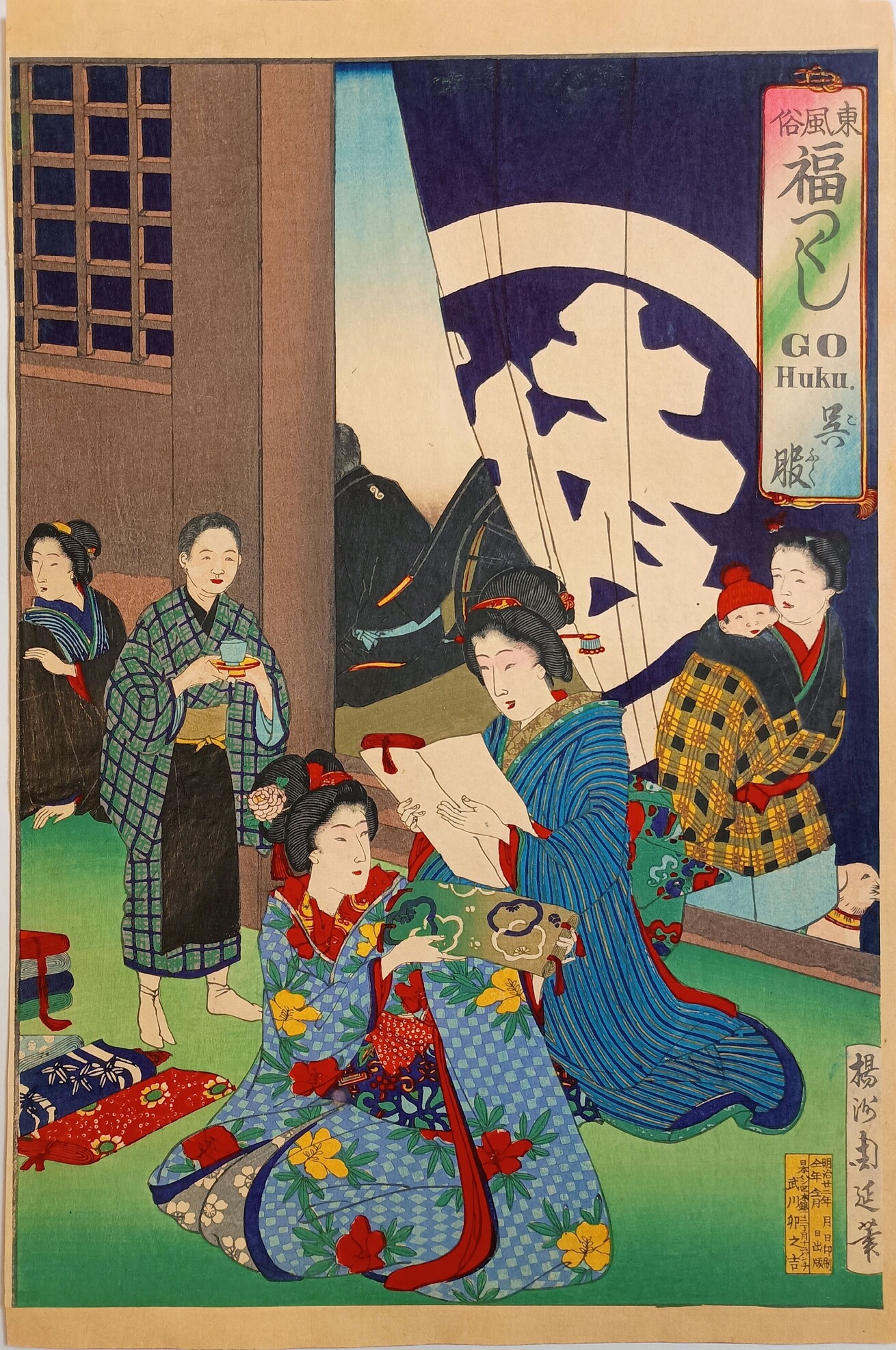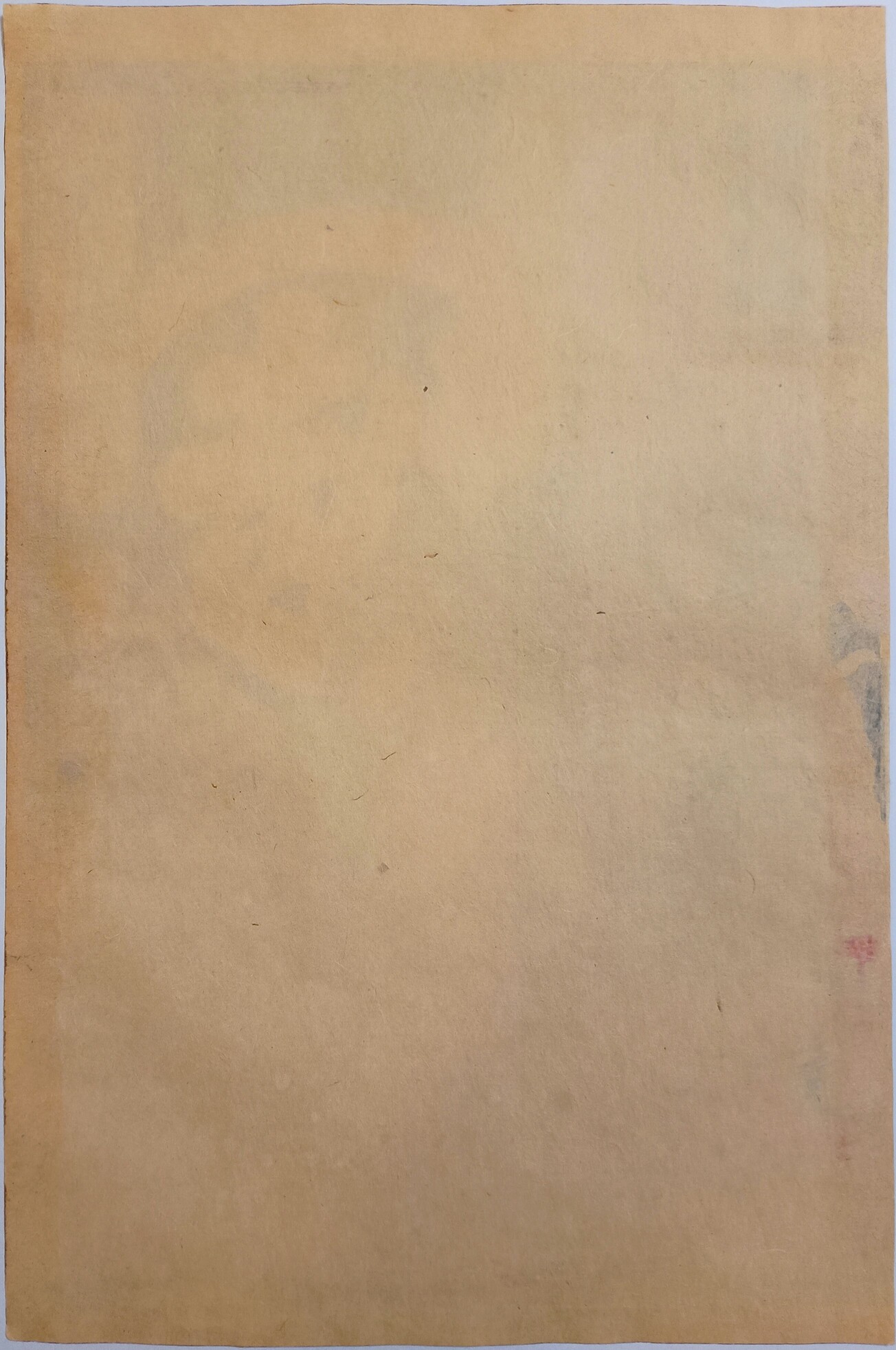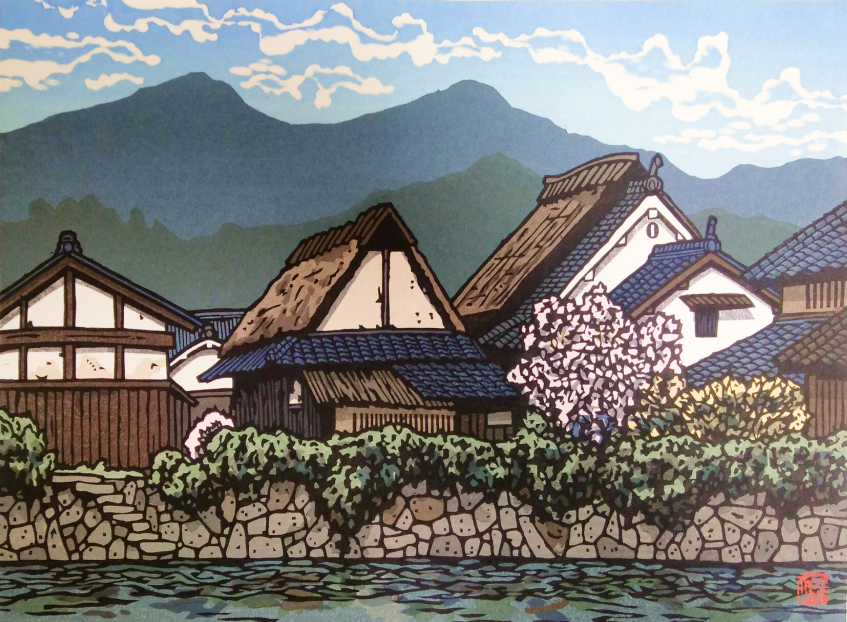


Condition: Good condition, with vivid colors and fine details. No significant stains, halos, or creases are visible. The paper is well-preserved, with no apparent damage or repairs. Unfortunately it has been completely trimmed along the edges and backed on another paper.
Traditional clothes, drapery and dry-goods.
(Gofuku, 呉服).
This print comes from a series produced between 1887 and 1890, illustrating words containing the syllable "fuku" (or huku), often associated with blessings and good fortune.
The series beautifully depicts women, children, and families engaging in daily life, traditions, and festivities during the Meiji era.
In this print, the character "fuku" is represented by 服 (fuku), which generally means clothing, garment, or attire. It is paired with 呉 (go), a character historically and culturally associated
with China (now rarely used outside academic or literary contexts), forming the term 呉服 (gofuku), which appears in the print`s title.
Originally, this term referred to textiles imported from China, but today it is used to indicate kimono and traditional Japanese fabrics. The combination of 呉 (Go) and 服 (Fuku) thus emphasizes
the concept of clothing, possibly relating to the sale of garments or the celebration of traditional Japanese attire.
Condition: Good condition, with vivid colors and fine details. No significant stains, halos, or creases are visible. The paper is well-preserved, with no apparent damage or repairs. Unfortunately it has been completely trimmed along the edges and backed on another paper.
| Price | USD$ 159.00 |
|---|---|
| Series | Customs of the East / Customs of the Capital: a collection of the word "Fuku". (Azuma fūzoku. Fukutsukushi, 東風俗 福つくし). |
| Author | Yōshū Chikanobu (揚州周延). |
| Size | Ōban (大判) 35.7cm x 23.5cm (13.77 x 9.05 inches). |
| Publisher | Takekawa Unokichi (武川卯之吉). |
| Number | 20/30 |
| Genre | Bijin-ga (美人画), kaika-e (開花絵). |
| Period | C. 1889. |
| Trimmed | Yes |
| Backed | Yes |
| Code | YSK01003 |
